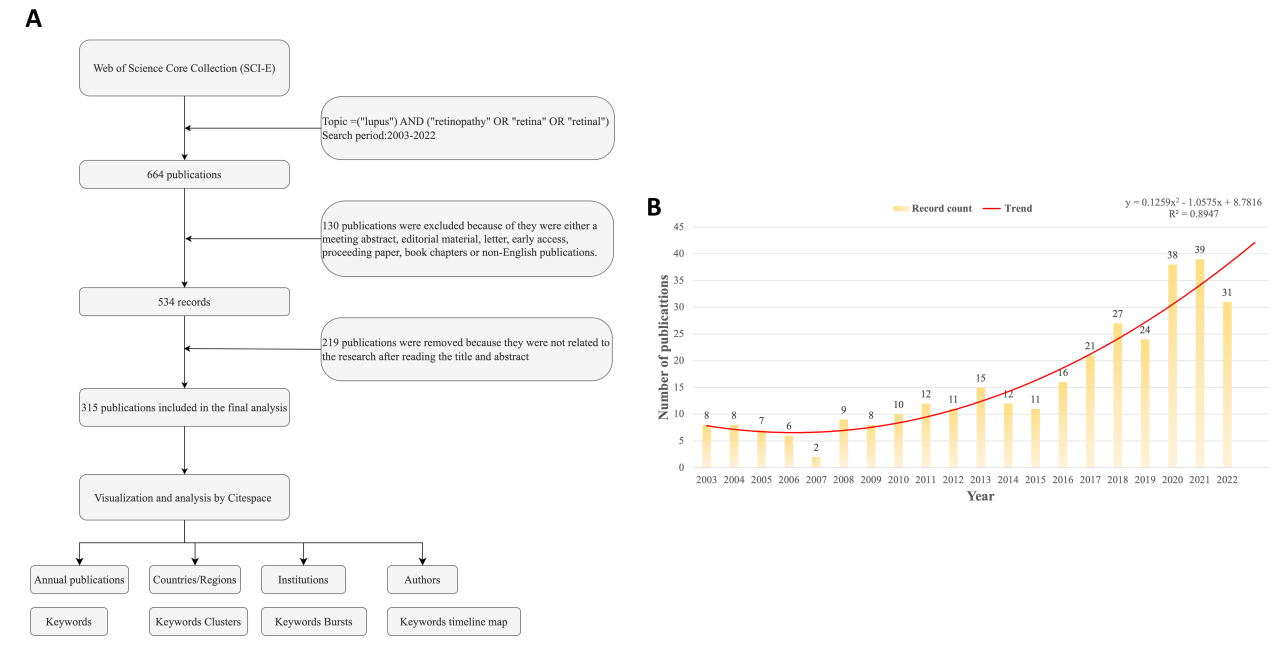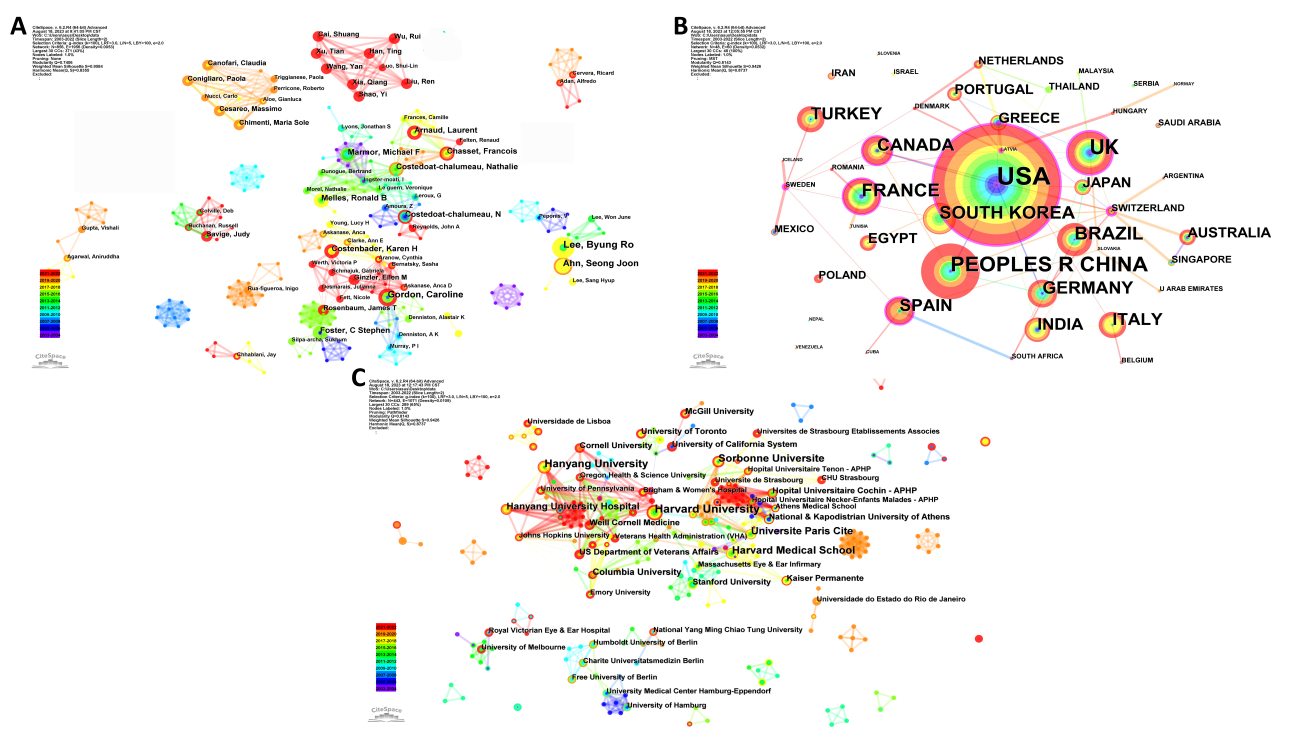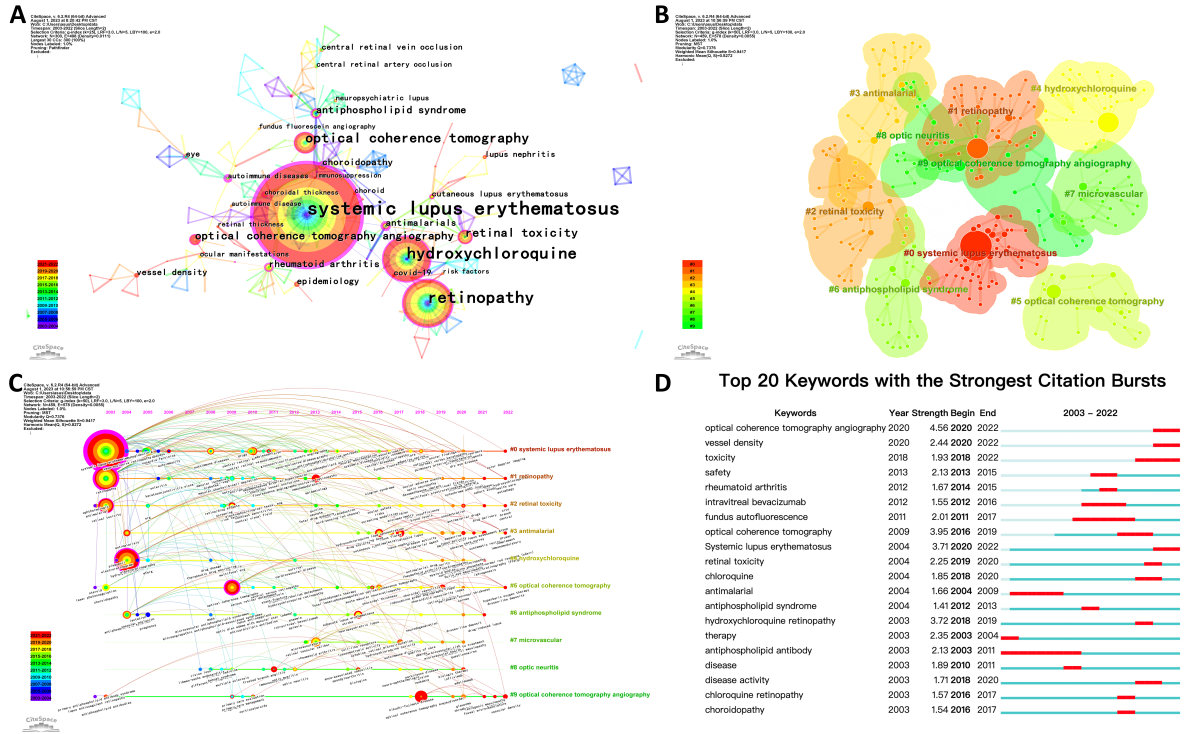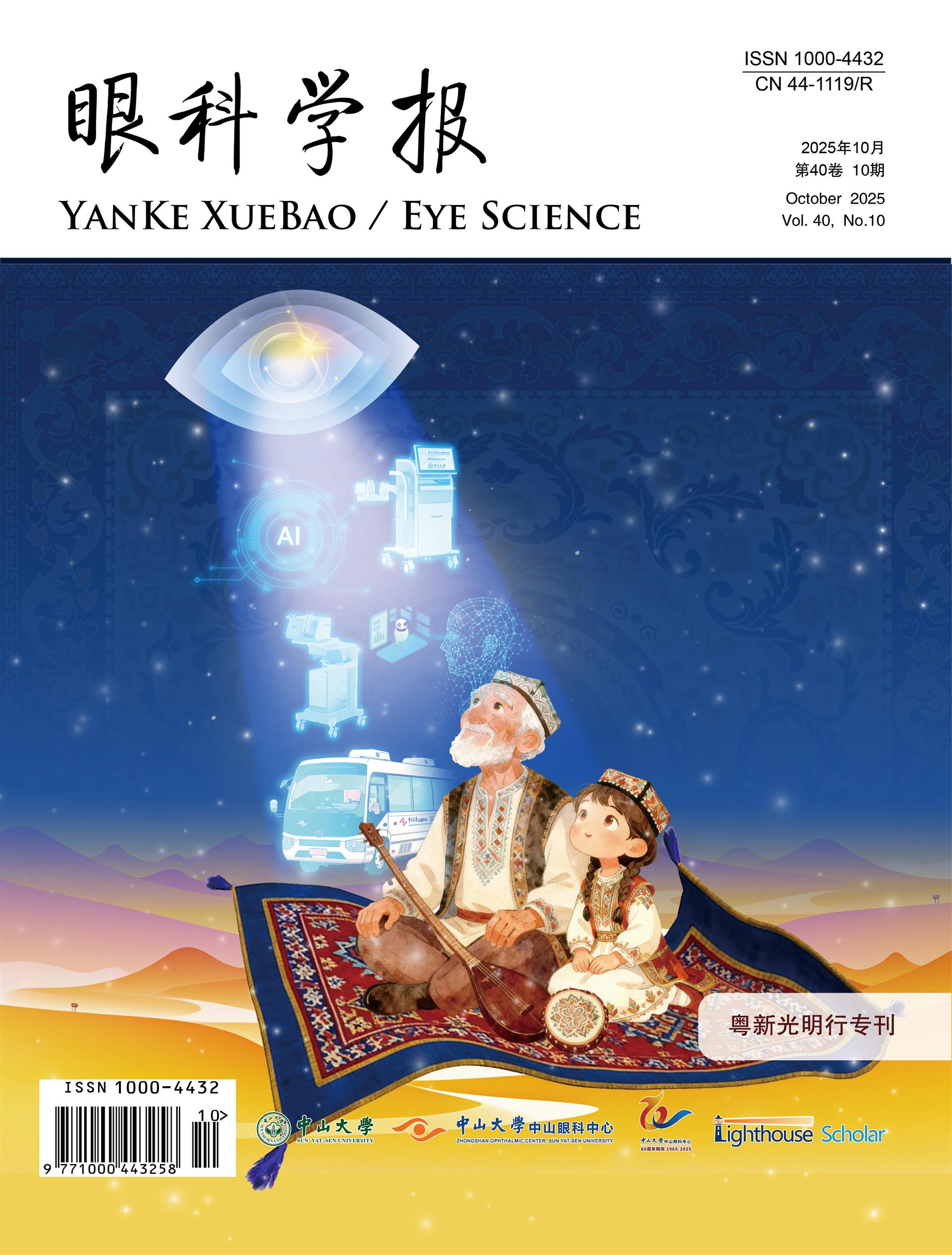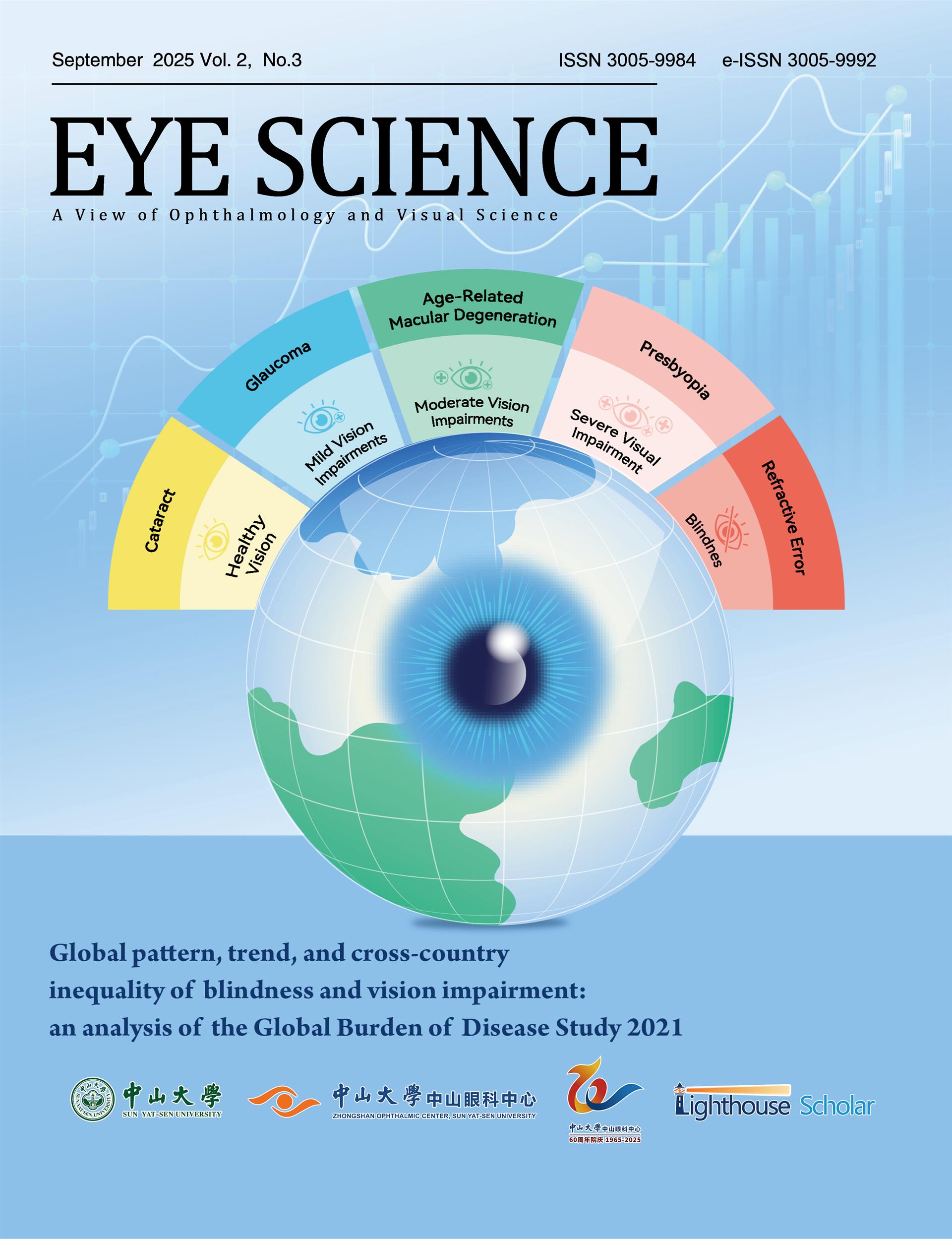1、Kiriakidou M, Ching CL. Systemic lupus erythematosus. Ann Intern Med. 2020, 172(11): ITC81-ITC96. DOI: 10.7326/AITC202006020.Kiriakidou M, Ching CL. Systemic lupus erythematosus. Ann Intern Med. 2020, 172(11): ITC81-ITC96. DOI: 10.7326/AITC202006020.
2、Lee I, Zickuhr L, Hassman L. Update on ophthalmic manifestations of systemic lupus erythematosus: pathogenesis and precision medicine. Curr Opin Ophthalmol. 2021, 32(6): 583-589. DOI: 10.1097/ ICU.0000000000000810.Lee I, Zickuhr L, Hassman L. Update on ophthalmic manifestations of systemic lupus erythematosus: pathogenesis and precision medicine. Curr Opin Ophthalmol. 2021, 32(6): 583-589. DOI: 10.1097/ ICU.0000000000000810.
3、de%20Andrade%20FA%2C%20Guimar%C3%A3es%20Moreira%20Balbi%20G%2C%20Bortoloti%20de%20Azevedo%20LG%2C%20et%20al.%20Neuro-ophthalmologic%20manifestations%20in%20systemic%20lupus%20erythematosus.%20Lupus.%202017%2C%2026(5)%3A%20522-%20528.%20DOI%3A%2010.1177%2F0961203316683265.de%20Andrade%20FA%2C%20Guimar%C3%A3es%20Moreira%20Balbi%20G%2C%20Bortoloti%20de%20Azevedo%20LG%2C%20et%20al.%20Neuro-ophthalmologic%20manifestations%20in%20systemic%20lupus%20erythematosus.%20Lupus.%202017%2C%2026(5)%3A%20522-%20528.%20DOI%3A%2010.1177%2F0961203316683265.
4、Azevedo LGB, Biancardi AL, Silva RA, et al. Lupus retinopathy: epidemiology and risk factors. Arq Bras Oftalmol. 2021, 84(4): 395-401. DOI: 10.5935/0004- 2749.20210076.Azevedo LGB, Biancardi AL, Silva RA, et al. Lupus retinopathy: epidemiology and risk factors. Arq Bras Oftalmol. 2021, 84(4): 395-401. DOI: 10.5935/0004- 2749.20210076.
5、Chen C. Searching for intellectual turning points: progressive knowledge domain visualization. Proc Natl Acad Sci USA. 2004,101(Suppl 1): 5303-5310. DOI: 10.1073/pnas.0307513100.Chen C. Searching for intellectual turning points: progressive knowledge domain visualization. Proc Natl Acad Sci USA. 2004,101(Suppl 1): 5303-5310. DOI: 10.1073/pnas.0307513100.
6、Chen C, Song M. Visualizing a field of research: a methodology of systematic scientometric reviews. PLoS One, 2019, 14(10): e0223994. DOI: 10.1371/journal. pone.0223994.Chen C, Song M. Visualizing a field of research: a methodology of systematic scientometric reviews. PLoS One, 2019, 14(10): e0223994. DOI: 10.1371/journal. pone.0223994.
7、Chen C, Dubin R, Kim MC. Emerging trends and new developments in regenerative medicine: a scientometric update (2000 - 2014). Expert Opin Biol Ther, 2014, 14(9):
1295-1317. DOI: 10.1517/14712598.2014.920813.Chen C, Dubin R, Kim MC. Emerging trends and new developments in regenerative medicine: a scientometric update (2000 - 2014). Expert Opin Biol Ther, 2014, 14(9):
1295-1317. DOI: 10.1517/14712598.2014.920813.
8、Dong Y, Liu Y, Yu J, etal. Mapping research trends in diabetic retinopathy from 2010 to 2019: a bibliometric analysis. Medicine. 2021, 100(3): e23981. DOI: 10.1097/ MD.0000000000023981.Dong Y, Liu Y, Yu J, etal. Mapping research trends in diabetic retinopathy from 2010 to 2019: a bibliometric analysis. Medicine. 2021, 100(3): e23981. DOI: 10.1097/ MD.0000000000023981.
9、Lin A, Mai X, Lin T, et al. Research trends and hotspots of retinal optical coherence tomography: a 31-year bibliometric analysis. J Clin Med. 2022, 11(19): 5604. DOI: 10.3390/jcm11195604.Lin A, Mai X, Lin T, et al. Research trends and hotspots of retinal optical coherence tomography: a 31-year bibliometric analysis. J Clin Med. 2022, 11(19): 5604. DOI: 10.3390/jcm11195604.
10、Wang R, Zuo G, Li K, et al. Systematic bibliometric and visualized analysis of research hotspots and trends on the application of artificial intelligence in diabetic retinopathy. Front Endocrinol. 2022, 13: 1036426. DOI: 10.3389/ fendo.2022.1036426.Wang R, Zuo G, Li K, et al. Systematic bibliometric and visualized analysis of research hotspots and trends on the application of artificial intelligence in diabetic retinopathy. Front Endocrinol. 2022, 13: 1036426. DOI: 10.3389/ fendo.2022.1036426.
11、Zhao J, Lu Y, Qian Y, et al. Emerging trends and research foci in artificial intelligence for retinal diseases: bibliometric and visualization study. J Med Internet Res. 2022, 24(6): e37532. DOI: 10.2196/37532.Zhao J, Lu Y, Qian Y, et al. Emerging trends and research foci in artificial intelligence for retinal diseases: bibliometric and visualization study. J Med Internet Res. 2022, 24(6): e37532. DOI: 10.2196/37532.
12、Synnestvedt MB, Chen C, Holmes JH. CiteSpace II: visualization and knowledge discovery in bibliographic databases. AMIA Annu Symp Proc. 2005, 2005: 724-728.Synnestvedt MB, Chen C, Holmes JH. CiteSpace II: visualization and knowledge discovery in bibliographic databases. AMIA Annu Symp Proc. 2005, 2005: 724-728.
13、Sabe M, Pillinger T, Kaiser S, et al. Half a century of research on antipsychotics and schizophrenia: a scientometric study of hotspots, nodes, bursts, and trends. Neurosci Biobehav Rev. 2022, 136: 104608. DOI: 10.1016/j.neubiorev.2022.104608.Sabe M, Pillinger T, Kaiser S, et al. Half a century of research on antipsychotics and schizophrenia: a scientometric study of hotspots, nodes, bursts, and trends. Neurosci Biobehav Rev. 2022, 136: 104608. DOI: 10.1016/j.neubiorev.2022.104608.
14、Ponticelli C, Moroni G. Hydroxychloroquine in systemic lupus erythematosus (SLE). Expert Opin Drug Saf. 2017, 16(3): 411-419. DOI: 10.1080/14740338.2017.1269168.Ponticelli C, Moroni G. Hydroxychloroquine in systemic lupus erythematosus (SLE). Expert Opin Drug Saf. 2017, 16(3): 411-419. DOI: 10.1080/14740338.2017.1269168.
15、Yusuf IH, Sharma S, Luqmani R, et al. Hydroxychloroquine retinopathy. Eye. 2017, 31(6): 828- 845. DOI: 10.1038/eye.2016.298.Yusuf IH, Sharma S, Luqmani R, et al. Hydroxychloroquine retinopathy. Eye. 2017, 31(6): 828- 845. DOI: 10.1038/eye.2016.298.
16、Marmor MF, Carr RE, Easterbrook M, et al. Recommendations on screening for chloroquine and hydroxychloroquine retinopathy: a report by the American Academy of Ophthalmology. Ophthalmology. 2002, 109(7): 1377-1382. DOI: 10.1016/s0161-6420(02)01168-5Marmor MF, Carr RE, Easterbrook M, et al. Recommendations on screening for chloroquine and hydroxychloroquine retinopathy: a report by the American Academy of Ophthalmology. Ophthalmology. 2002, 109(7): 1377-1382. DOI: 10.1016/s0161-6420(02)01168-5
17、Wolfe F, Marmor MF. Rates and predictors of hydroxychloroquine retinal toxicity in patients with rheumatoid arthritis and systemic lupus erythematosus. Arthritis Care Res. 2010, 62(6): 775-784. DOI: 10.1002/ acr.20133.Wolfe F, Marmor MF. Rates and predictors of hydroxychloroquine retinal toxicity in patients with rheumatoid arthritis and systemic lupus erythematosus. Arthritis Care Res. 2010, 62(6): 775-784. DOI: 10.1002/ acr.20133.
18、Melles RB, Marmor MF. The risk of toxic retinopathy in patients on long-term hydroxychloroquine therapy. JAMA Ophthalmol. 2014, 132(12): 1453-1460. DOI: 10.1001/ jamaophthalmol.2014.3459.Melles RB, Marmor MF. The risk of toxic retinopathy in patients on long-term hydroxychloroquine therapy. JAMA Ophthalmol. 2014, 132(12): 1453-1460. DOI: 10.1001/ jamaophthalmol.2014.3459.
19、Melles RB, Jorge AM, Marmor MF, et al. Hydroxychloroquine dose and risk for incident retinopathy: acohort study. Ann Intern Med. 2023, 176(2): 166-173. DOI: 10.7326/M22-2453.Melles RB, Jorge AM, Marmor MF, et al. Hydroxychloroquine dose and risk for incident retinopathy: acohort study. Ann Intern Med. 2023, 176(2): 166-173. DOI: 10.7326/M22-2453.
20、Marmor MF, Kellner U, Lai TYY, et al. Revised recommendations on screening for chloroquine and hydroxychloroquine retinopathy. Ophthalmology. 2011, 118(2): 415-422. DOI: 10.1016/j.ophtha.2010.11.017.Marmor MF, Kellner U, Lai TYY, et al. Revised recommendations on screening for chloroquine and hydroxychloroquine retinopathy. Ophthalmology. 2011, 118(2): 415-422. DOI: 10.1016/j.ophtha.2010.11.017.
21、Marmor MF, Kellner U, Lai TYY, et al. Recommendations on screening for chloroquine and hydroxychloroquine retinopathy (2016 revision). Ophthalmology. 2016, 123(6): 1386-1394. DOI: 10.1016/j.ophtha.2016.01.058.Marmor MF, Kellner U, Lai TYY, et al. Recommendations on screening for chloroquine and hydroxychloroquine retinopathy (2016 revision). Ophthalmology. 2016, 123(6): 1386-1394. DOI: 10.1016/j.ophtha.2016.01.058.
22、Yu%20C%2C%20Zou%20J%2C%20Ge%20QM%2C%20et%20al.%20Ocular%20microvascular%20alteration%20in%20Sj%C3%B6gren%E2%80%99s%20syndrome%20treated%20with%20hydroxychloroquine%3A%20an%20OCTA%20clinical%20study.%20Ther%20Adv%20Chronic%20Dis.%202023%2C%2014%3A%2020406223231164498.%20DOI%3A%2010.1177%2F20406223231164498.Yu%20C%2C%20Zou%20J%2C%20Ge%20QM%2C%20et%20al.%20Ocular%20microvascular%20alteration%20in%20Sj%C3%B6gren%E2%80%99s%20syndrome%20treated%20with%20hydroxychloroquine%3A%20an%20OCTA%20clinical%20study.%20Ther%20Adv%20Chronic%20Dis.%202023%2C%2014%3A%2020406223231164498.%20DOI%3A%2010.1177%2F20406223231164498.
23、Akhlaghi M, Kianersi F, Radmehr H, et al. Evaluation of optical coherence tomography angiography parameters in patients treated with Hydroxychloroquine. BMC Ophthalmol. 2021, 21(1): 209. DOI: 10.1186/s12886-021- 01977-5.Akhlaghi M, Kianersi F, Radmehr H, et al. Evaluation of optical coherence tomography angiography parameters in patients treated with Hydroxychloroquine. BMC Ophthalmol. 2021, 21(1): 209. DOI: 10.1186/s12886-021- 01977-5.
24、Liu Z, Jiang H, Townsend JH, et al. Retinal tissue perfusion reduction best discriminates early stage diabetic retinopathy in patients with type 2 diabetes mellitus. Retina. 2021, 41(3): 546-554. DOI: 10.1097/IAE.0000000000002880.Liu Z, Jiang H, Townsend JH, et al. Retinal tissue perfusion reduction best discriminates early stage diabetic retinopathy in patients with type 2 diabetes mellitus. Retina. 2021, 41(3): 546-554. DOI: 10.1097/IAE.0000000000002880.
25、Liu J, Tonk RS, Huang AM, et al. Transient effect of suction on the retinal neurovasculature in myopic patients after small-incision lenticule extraction. J Cataract Refract Surg. 2020, 46(2): 250-259. DOI: 10.1016/ j.jcrs.2019.09.003.Liu J, Tonk RS, Huang AM, et al. Transient effect of suction on the retinal neurovasculature in myopic patients after small-incision lenticule extraction. J Cataract Refract Surg. 2020, 46(2): 250-259. DOI: 10.1016/ j.jcrs.2019.09.003.
26、Seth G, Chengappa KG, Misra DP, et al. Lupus retinopathy: a marker of active systemic lupus erythematosus. Rheumatol Int. 2018, 38(8): 1495-1501. DOI: 10.1007/s00296-018-4083-4.Seth G, Chengappa KG, Misra DP, et al. Lupus retinopathy: a marker of active systemic lupus erythematosus. Rheumatol Int. 2018, 38(8): 1495-1501. DOI: 10.1007/s00296-018-4083-4.
27、 Pelegrín L, Morató M, Araújo O, et al. Preclinical ocular changes in systemic lupus erythematosus patients by optical coherence tomography. Rheumatology. 2023,62(7):2475-2482. DOI: 10.1093/rheumatology/ keac626. Pelegrín L, Morató M, Araújo O, et al. Preclinical ocular changes in systemic lupus erythematosus patients by optical coherence tomography. Rheumatology. 2023,62(7):2475-2482. DOI: 10.1093/rheumatology/ keac626.
28、Conigliaro P, Cesareo M, Chimenti MS, et al. Evaluation of retinal microvascular density in patients affected by systemic lupus erythematosus: an optical coherence tomography angiography study. Ann Rheum Dis. 2019, 78(2): 287-289. DOI: 10.1136/annrheumdis-2018-214235.Conigliaro P, Cesareo M, Chimenti MS, et al. Evaluation of retinal microvascular density in patients affected by systemic lupus erythematosus: an optical coherence tomography angiography study. Ann Rheum Dis. 2019, 78(2): 287-289. DOI: 10.1136/annrheumdis-2018-214235.
29、Arfeen SA, Bahgat N, Adel N, et al. Assessment of superficial and deep retinal vessel density in systemic lupus erythematosus patients using optical coherence tomography angiography. Graefes Arch Clin Exp Ophthalmol. 2020, 258(6): 1261-1268. DOI: 10.1007/ s00417-020-04626-7.Arfeen SA, Bahgat N, Adel N, et al. Assessment of superficial and deep retinal vessel density in systemic lupus erythematosus patients using optical coherence tomography angiography. Graefes Arch Clin Exp Ophthalmol. 2020, 258(6): 1261-1268. DOI: 10.1007/ s00417-020-04626-7.
30、Liu R, Wang Y, Xia Q, et al. Retinal thickness and microvascular alterations in the diagnosis of systemic lupus erythematosus: a new approach. Quant Imaging Med Surg. 2022, 12(1): 823-837. DOI: 10.21037/qims-21-359.Liu R, Wang Y, Xia Q, et al. Retinal thickness and microvascular alterations in the diagnosis of systemic lupus erythematosus: a new approach. Quant Imaging Med Surg. 2022, 12(1): 823-837. DOI: 10.21037/qims-21-359.
31、Tu%C4%9FanBY%2C%20S%C3%B6nmez%20HE%2C%20Y%C3%BCksel%20N%2C%20et%20al.%20Subclinical%20retinal%20capillary%20abnormalities%20in%20juvenile%20systemic%20lupus%20erythematosus%20without%20ocular%20involvement.%20Ocul%20Immunol%20Inflamm.%202023%2C%2031(3)%3A%20576-584.%20DOI%3A10.1080%2F09273948.2022.2116584.Tu%C4%9FanBY%2C%20S%C3%B6nmez%20HE%2C%20Y%C3%BCksel%20N%2C%20et%20al.%20Subclinical%20retinal%20capillary%20abnormalities%20in%20juvenile%20systemic%20lupus%20erythematosus%20without%20ocular%20involvement.%20Ocul%20Immunol%20Inflamm.%202023%2C%2031(3)%3A%20576-584.%20DOI%3A10.1080%2F09273948.2022.2116584.
32、Bao L, Zhou R, Wu Y, et al. Unique changes in the retinal microvasculature reveal subclinical retinal impairment in patients with systemic lupus erythematosus. Microvasc Res. 2020, 129: 103957. DOI: 10.1016/ j.mvr.2019.103957.Bao L, Zhou R, Wu Y, et al. Unique changes in the retinal microvasculature reveal subclinical retinal impairment in patients with systemic lupus erythematosus. Microvasc Res. 2020, 129: 103957. DOI: 10.1016/ j.mvr.2019.103957.
33、Li J, Wei D, Mao M, et al. Ultra-widefield color fundus photography combined with high-speed ultra-widefield swept-source optical coherence tomography angiography for non-invasive detection of lesions in diabetic retinopathy. Front Public Health. 2022, 10: 1047608. DOI: 10.3389/fpubh.2022.1047608.Li J, Wei D, Mao M, et al. Ultra-widefield color fundus photography combined with high-speed ultra-widefield swept-source optical coherence tomography angiography for non-invasive detection of lesions in diabetic retinopathy. Front Public Health. 2022, 10: 1047608. DOI: 10.3389/fpubh.2022.1047608.
34、Esteva A, Robicquet A, Ramsundar B, et al. A guide to deep learning in healthcare. Nat Med. 2019, 25(1): 24-29. DOI: 10.1038/s41591-018-0316-z.Esteva A, Robicquet A, Ramsundar B, et al. A guide to deep learning in healthcare. Nat Med. 2019, 25(1): 24-29. DOI: 10.1038/s41591-018-0316-z.
35、Ruamviboonsuk P, Tiwari R, Sayres R, et al. Real-time diabetic retinopathy screening by deep learning in a multisite national screening programme: a prospective interventional cohort study. Lancet Digit Health. 2022, 4(4): e235-e244. DOI: 10.1016/S2589-7500(22)00017-6.Ruamviboonsuk P, Tiwari R, Sayres R, et al. Real-time diabetic retinopathy screening by deep learning in a multisite national screening programme: a prospective interventional cohort study. Lancet Digit Health. 2022, 4(4): e235-e244. DOI: 10.1016/S2589-7500(22)00017-6.
36、Schmidt-Erfurth U, Sadeghipour A, Gerendas BS, et al. Artificial intelligence in retina. Prog Retin Eye Res. 2018, 67: 1-29. DOI: 10.1016/j.preteyeres.2018.07.004.Schmidt-Erfurth U, Sadeghipour A, Gerendas BS, et al. Artificial intelligence in retina. Prog Retin Eye Res. 2018, 67: 1-29. DOI: 10.1016/j.preteyeres.2018.07.004.




















